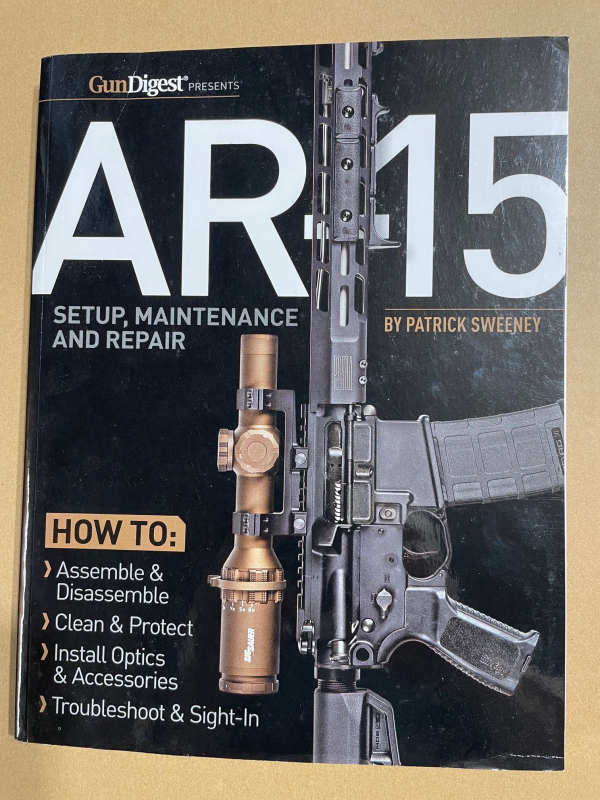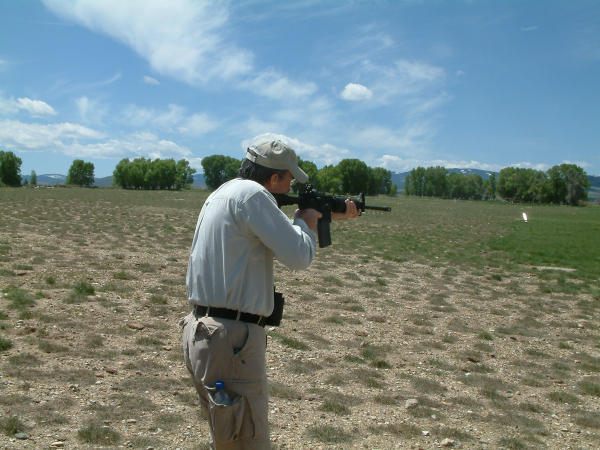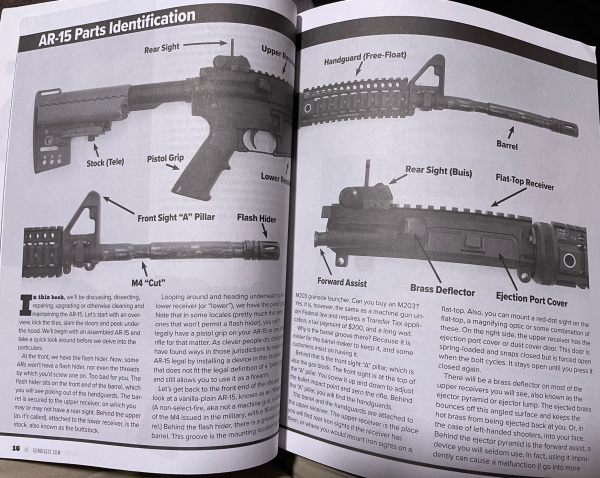Recently, our own Tiger McKee wrote about working through the modularity of your own AR-15 here. While searching through the Gun Digest Books library, I found a book by Patrick Sweeney -- AR-15 Setup, Maintenance and Repair.

What can you expect to get out of a book like this that you may not get from another? – Asides from a great deal of practical information, you get organization. It’s about the best organized book on use and care of America’s Rifle that I’ve seen thus far.
As to the author, I met Patrick Sweeney a few times, shot with him some during media events. To say he’s knowledgeable is an understatement, but it goes further. He can handle the hands-on inspection, fitting, repair and test protocols – he’s a legitimate gunsmith. If I wrote a book about the AR, it would be short – I’m a trigger puller. When it comes to getting much past immediate action for stoppages and checking the bore for obstructions, I’ll be checking in with someone just like Mr. Sweeney.

Beginning with basics, he shows and describes what they are, the different types of AR-15 firearms (some could be called “pistols” by ATF … sometimes). He also illustrates the nomenclature, explaining the proper names of the various pieces & parts. Some people think those who use technical terms are posturing as an expert. Others of us know that a common language is essential to communication – explanation and learning.
He has a chapter on tools – you don’t need many, but what you need you need. He lists the essential implements as well as those that can be nice to have or that handle jobs you didn’t think you’d have to do.
The chapter on “Testing the AR-15” is a critical piece. It explains a process of checking a gun at a gun show/gun shop or checking a gun that you (or someone else) built. It’s an essential piece of knowledge for those who have some dedication to the platform – which is broadly used from the National Matches, in 3-Gun competition, for self-protection training and applications, for hunting and just to possess and shoot “America’s Rifle.”

From there, he takes the rifle in sections. He begins at the top, the upper receiver. Explaining the components, their construction and assembly, how they work together, he weaves a narrative to assist in understanding the principles of the rifle’s operation and use. While “Uppers” is the name of a chapter, it’s followed by chapters on barrels, barrel fitting and cleaning, bolts and bolt carriers, front sights and gas blocks, and rear sights. In each, there’s a hands-on component as if you’re building a rifle – or inspecting one.
He moves to the lower receiver with a general discussion followed by chapters on the stocks, springs and buffers, and triggers.
He ends with a build sequence for those who want to make their own.
I mentioned my contact with Patrick Sweeney, but his bio gives additional support to his expertise in this area. He is a certified master gunsmith and armorer instructor for police departments as well as being author of several books with the Gun Digest imprint.
Read them, you’ll learn something.
I learned quite a lot.
-- Rich Grassi